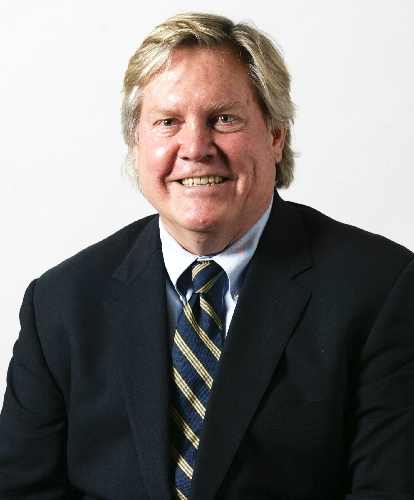Hearings begin on redistricting in Nevada
How about this for a budget-cutting plan: Reduce the number of Nevada lawmakers to save money.
Senate Majority Leader Steven Horsford, D-Las Vegas, threw out the idea on Thursday as legislators kicked off their first hearing on redistricting, the process of redrawing the state's political map every 10 years. He said that he read that four states are reducing the size of their Legislatures and that Nevada should consider it, too, while looking at ways to trim spending.
"Why would we look at cutting back on the size of government and not look at cutting back on the size of the Legislature?" Horsford said in an interview after casually posing the question during the hearing. "We've got to reset."
The two-hour meeting set the stage for the partisan battle to start as Democrats, Republicans and interest groups -- from Hispanics to rural Nevadans -- look for electoral advantage as new lines are drawn for legislative districts and the state's congressional districts, including a new fourth one. The goal is to complete a plan by the end of the 120-day session in June.
Nevada was awarded the 4th Congressional District because of its highest-in-the-nation population growth of 35 percent this past decade to 2.7 million people, according to the U.S. Census.
The total includes 26 percent who are Hispanic and 72 percent who live in Southern Nevada, where three of the newly drawn districts probably will be centered.
At the legislative level, under the current 21-seat Senate and 42-seat Assembly makeup, Clark County will gain at least one Senate seat and one to two Assembly seats after redistricting, which is designed to ensure each district has roughly an equal number of people living in it.
The legislative seats shifting to the south will come from Northern and rural Nevada. Now, Clark has 14 senators and 29 members of the Assembly, and its power stands to grow under any new map scenario.
Some Northern and rural Nevada Republicans lawmakers have proposed expanding the Legislature so that Washoe County, the state's No. 2 population center, and Nevada's other 15 counties don't lose representation. Horsford is the first lawmaker to suggest cutting the Legislature's size, which would dilute the power of the GOP-leaning north even more.
No Republicans objected to the idea at the joint hearing of the Senate and Assembly committees on legislative operations and elections. The notion probably will be part of the bargaining to come as urban southern Democrats and northern and rural Republicans negotiate a map that both sides can live with and GOP Gov. Brian Sandoval will sign. Democrats control both houses of the Legislature but don't have the necessary two-thirds votes needed to override a gubernatorial veto.
Not much money probably would be saved by trimming lawmakers as Democrats argue that Sandoval's $5.8 billion budget plan is as much as $2 billion short of needs. But the Legislative Counsel Bureau has said that each seat the Legislature adds would cost $55,000 in salary, travel and secretarial expenses and $150,000 to build new offices to accommodate them.
Assemblyman Tick Segerblom, D-Las Vegas, and chairman of the redistricting panel, said everything should be on the table.
"The rurals are obviously an issue, and Hispanics," Segerblom said. He added that he wants the process to be open, although the real deal-making is always done behind closed doors. "We want the public to get involved."
Segerblom said he isn't sure whether lawmakers will be able to draw a congressional district that is a minority-majority district, or at least 50 percent Hispanic, something the minority group is seeking.
"You can't just go out and look for a minority district" unless it makes legal and community sense, he said.
A map drawn by The Cook Political Report for the Las Vegas Review-Journal showed it is possible to redraw the 1st Congressional District, now 37 percent Hispanic, so that it's 50 percent Latino by population.
Legal and census experts who testified at Thursday's hearing said Nevada must comply with two things when redrawing its districts: the Constitution's requirement of equal representation and the Voting Rights Act. The act says a minority-majority district can be created if the minority population is concentrated in one area and if those in the minority tend to vote as a bloc and differently than the rest of the population living in the same area.
Tibi Ellis, chairwoman of the Nevada Republican Hispanic Caucus, said she and other Latinos, including Democrats, are prepared to go to court if lawmakers do not draw a minority-majority congressional district.
"Look, we're 26 percent of the population in Nevada, and we do vote as a bloc," Ellis said. "We deserve this."
Most Hispanics in Nevada are registered Democrats, but Ellis said that they largely voted for President George W. Bush in 2000 and 2004 when he won Nevada and then for President Barack Obama in 2008.
As the first Latino Nevada governor, Sandoval got a generous crossover Hispanic vote despite his conservative views on immigration.
Testifying from Elko, Matt McCarty, executive director of the city's Chamber of Commerce, told lawmakers he would like rural Nevada to be treated as a legal "community of interest" so residents outside the population centers are not forgotten.
"It's just important that as a community of interest the rurals maintain a voice in the legislative arena," he said.
Contact Laura Myers at lmyers@reviewjournal.com or 702-387-2919.






















